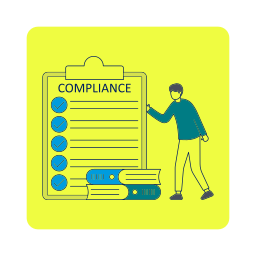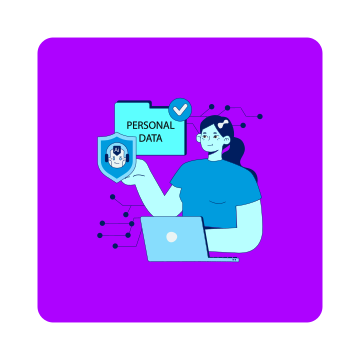How to Overcome the Most Common Automation Compliance Challenges
We’ve already discussed the current compliance challenges that automation programs combat and how those challenges will only intensify and increase as AI-assisted automation design and delivery becomes more rampant.
This article focuses on what automation leaders can do and the practices they can implement to address compliance challenges, how to overcome them, and reinforce better compliance in an increasingly complex landscape.
As the average business user starts to develop and deliver automations easily using tools that employ generative AI like Microsoft Copilot, managing compliance will become exceedingly more difficult, but not impossible. By adhering to the following recommendations, automation leaders can work towards a robust compliance strategy that ensures they stay on top of all regulatory requirements, controls, and internal policies.
5 Ways to Overcome the Most Common Automation Compliance Challenges
#1 – Robust Compliance Training and Awareness
The first step towards overcoming the automation compliance challenges that RPA (robotic process automation) programs face is thoroughly understanding the specific regulations that apply to your industry and how they impact your automation practice.
This includes educating IT and non-IT team members, considering that very soon, non-IT employees will also start producing and delivering automations.
Compliance training should cover internal compliance policies, the industry-specific regulatory landscape that governs your organization, and the roles employees play in ensuring compliance. For example, healthcare companies must review and understand HIPAA (Health Insurance Portability and Accountability Act), while financial services organizations operating in Europe must understand and comply with GDPR (General Data Protection Regulation).
#2 – Implementing Advanced Security Techniques and Measures
Implementing advanced security measures like strict access controls, secure credential controls, and continuous compliance checks go a long way to securing your automations and protecting the sensitive data your bots handle to reinforce compliance.
At a more granular level, strong security measures demand a governance framework that strictly manages who has access to data and how it’s stored, processed, and disposed of.
Learn More: 8 Steps to Build a Robust Security Framework for Automation
#3 – Regular Audits and Reviews
Similar to how robust automation security requires risk assessment tests, strong automation compliance is contingent on completing regular audits and reviews. Performing regular audits helps identify potential issues and risks before they become serious problems and, consequentially, penalties and fines.
Your automation compliance audits should assess both the operations elements of your bots and how data is managed in your automation program.
As software changes over time, the risk that your automated processes might not be compliant increases. Audits and reviews – which should be both internal and external – help ensure that your bots’ compliance standards haven’t deviated.
While internal audits carry a lot of value, they aren’t enough. External audits are also needed to ensure a thorough, unbiased assessment with external insight that can uncover compliance gaps your internal teams might have overlooked.
#4 – Collaboration with Regulatory Experts
Staying up to date with rapidly changing regulations is a challenge all on its own. Collaborating with your legal department—normally the regulatory experts at any organization—helps automation leaders stay informed about new compliance mandates and, if changes need to be implemented.
Legal teams typically have an expert-level understanding of the compliance requirements your automations must adhere to, so regular meetings, active dialogue, and their involvement as stakeholders in your automation practice is strongly recommended.
#5 – Adopting Purpose-Built Automation Compliance Technology
Interestingly enough, new developments like generative AI infiltrating automation are precisely what’s calling for technology to be used in managing compliance. Irony aside, compliance management software is a powerful tool that can help organizations monitor their automation program’s compliance in real-time.
Compliance software routinely comes with features that include compliance checklists, audit trails, and alerts that can notify teams of issues or changes that need to be made. Additionally, the application of machine learning algorithms in compliance software is growing, so automation leaders can predict and discover non-compliant patterns so RPA programs can proactively address risks before it’s too late.
Conclusion
Compliance challenges can be daunting but not insurmountable in the ever-changing world of automation that’s about to go through some revolutionary changes with generative AI. As organizations rapidly adopt AI-assisted automation tools like Microsoft Copilot, the complexity of successfully managing compliance grows.
By implementing solid compliance measures, automation leaders can effectively navigate these challenges. Those compliance measures include:
- Robust compliance training and awareness
- Implementing advanced security measures
- Conducting regular compliance audits and reviews
- Collaborating with regulatory experts
- Leveraging purpose-built compliance technology.
These strategies ensure that organizations adhere to strict regulatory requirements and control their internal policies, establishing a foundation for a secure and compliant automation practice.
Ultimately, the key to successful compliance in automation is a proactive, informed, and technologically supported approach that keeps pace with a rapidly changing tech and regulatory landscape.
Share this
Recent Stories

What are the Common Automation Compliance Challenges RPA Leaders Face? Lessons From the Front Lines

8 Steps to Build a Robust Security Framework for Automation

